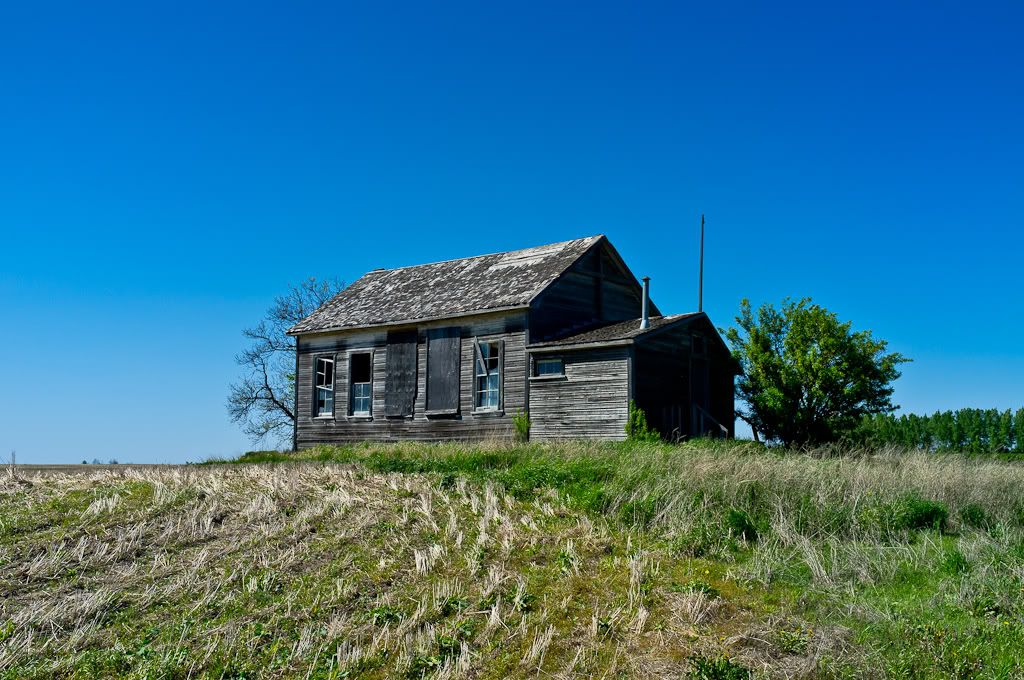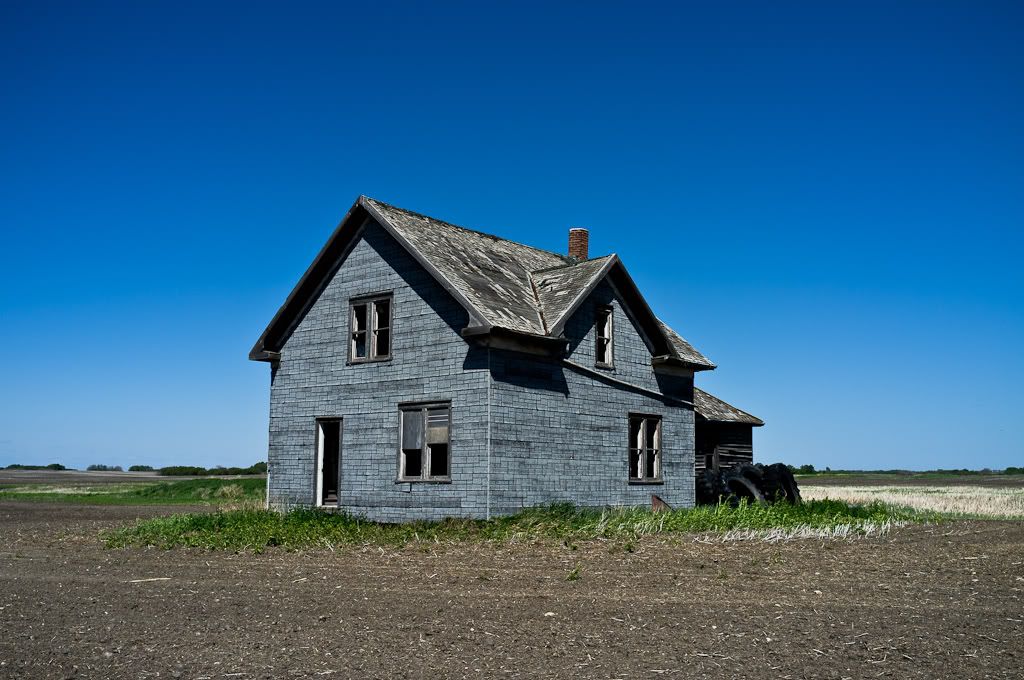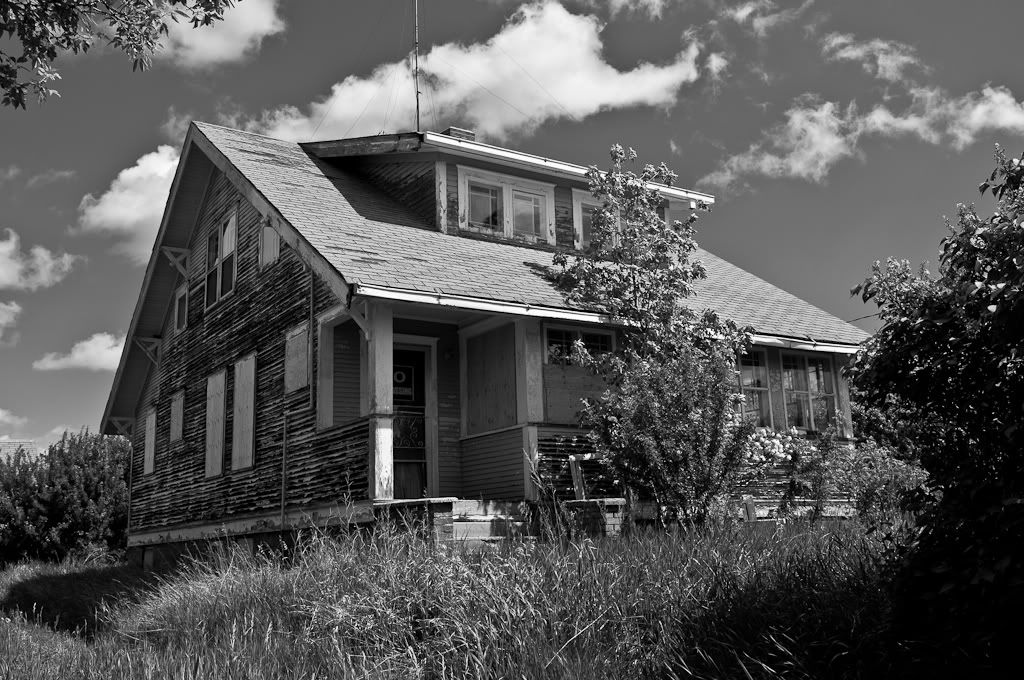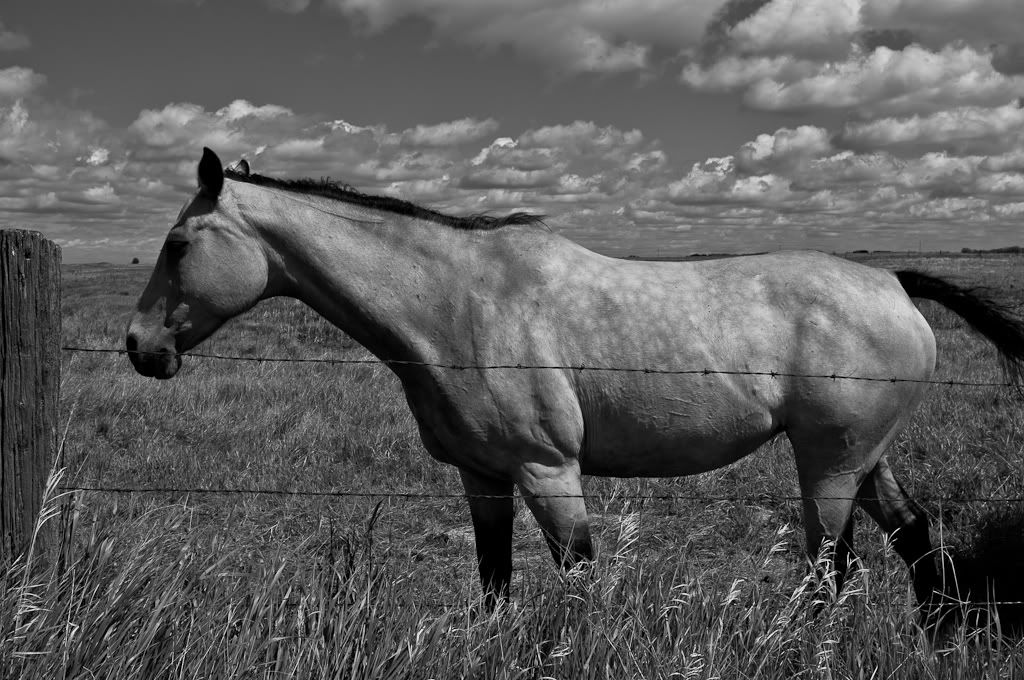Deep Fried
Established
I always get asked the same questions. These are all X100, shot raw at -1.00 EV processed in LR 3. And no I didn't use a tripod this time either 😉
Let me know what you guys think. My intention is to capture tonal relationships. I happen to choose derelict houses because they give me something for the landscape to create tonal relationships with. The brightness of the harsh prairie sky can only be seen as harsh when one views it glaring on something for example. I find that old broken buildings also show the power of the landscape; man's creations are not winning the battle....
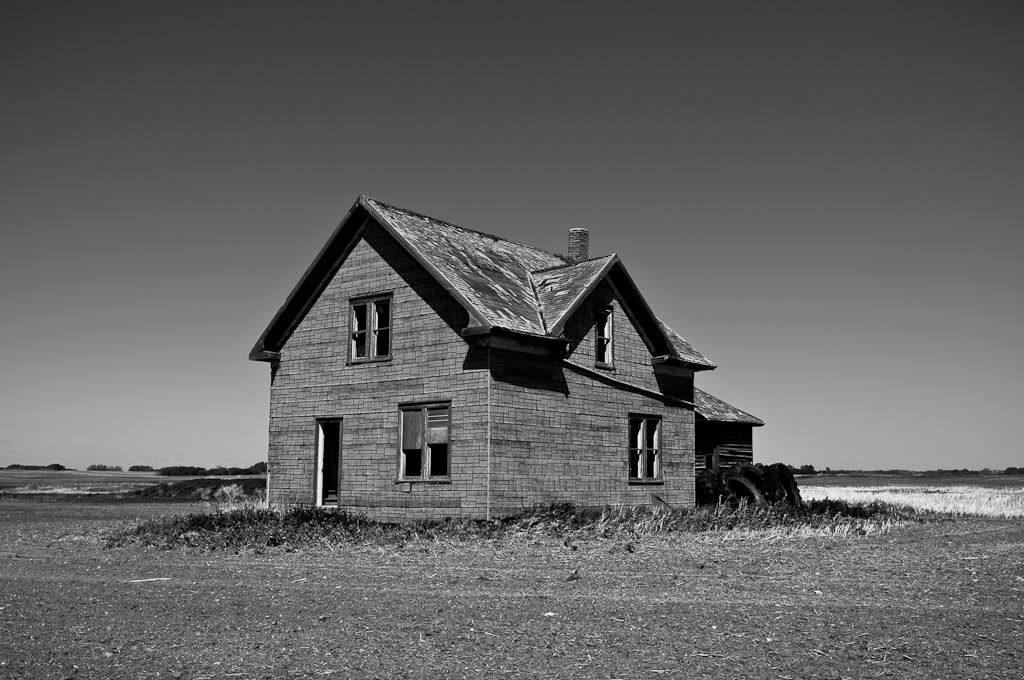
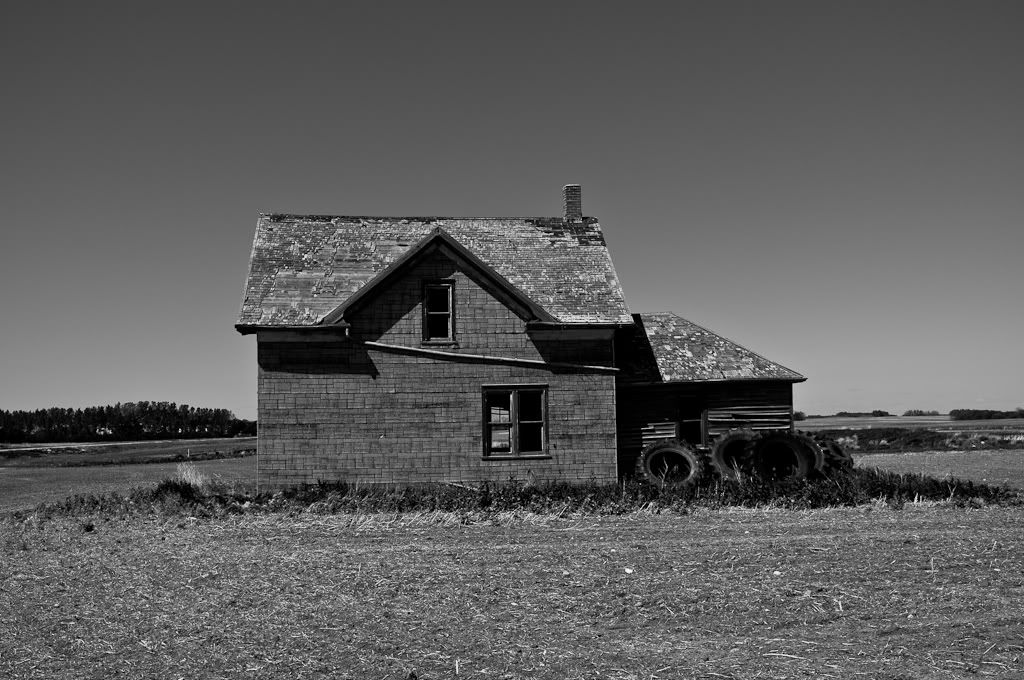
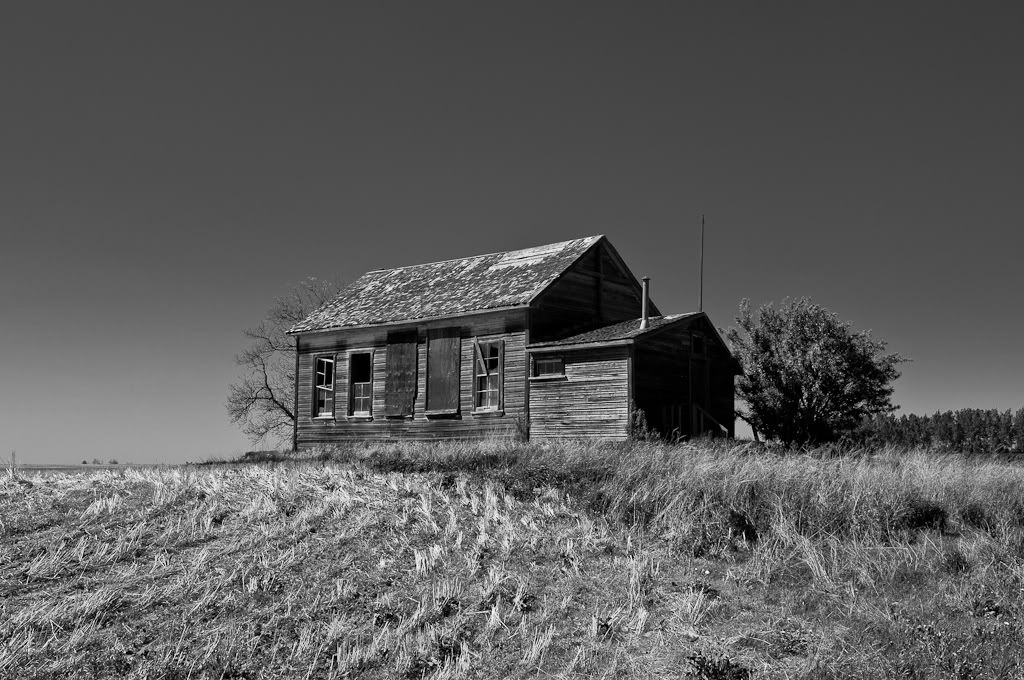
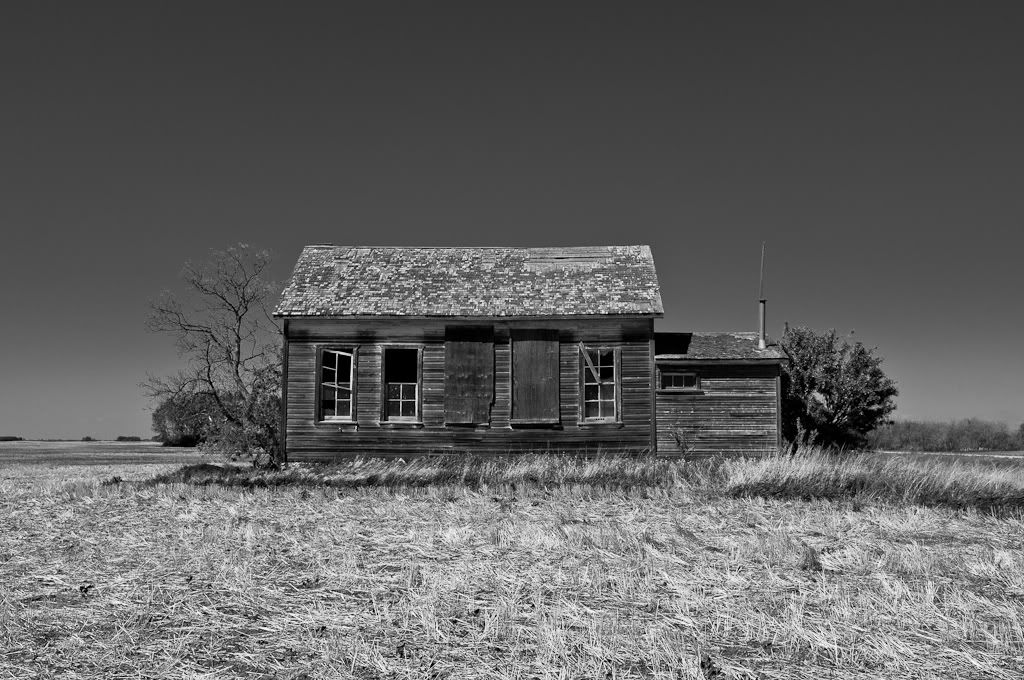
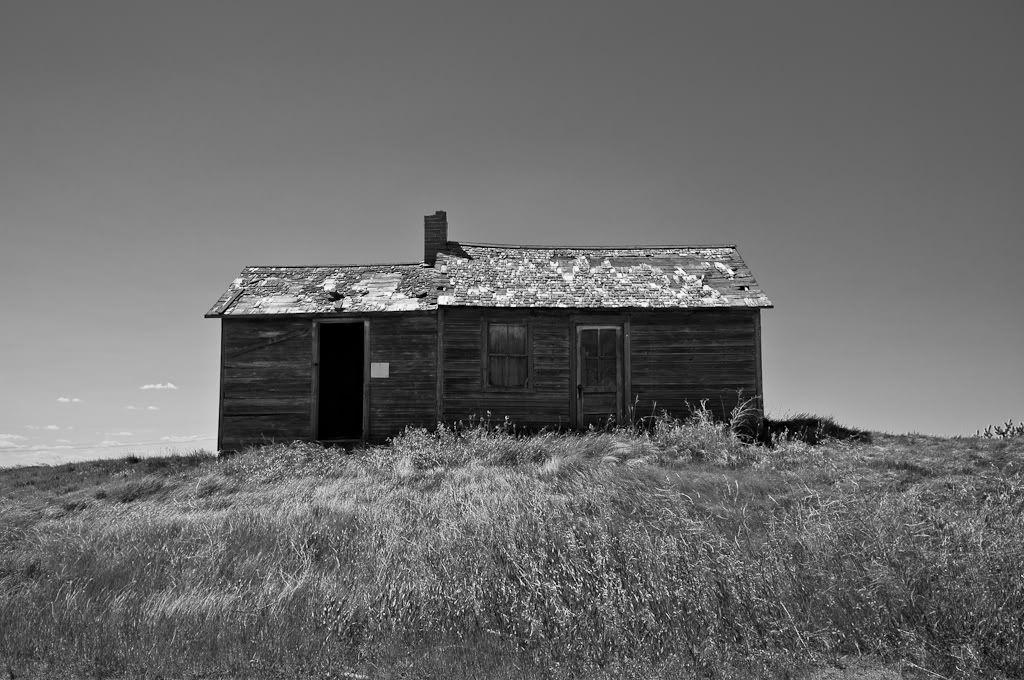
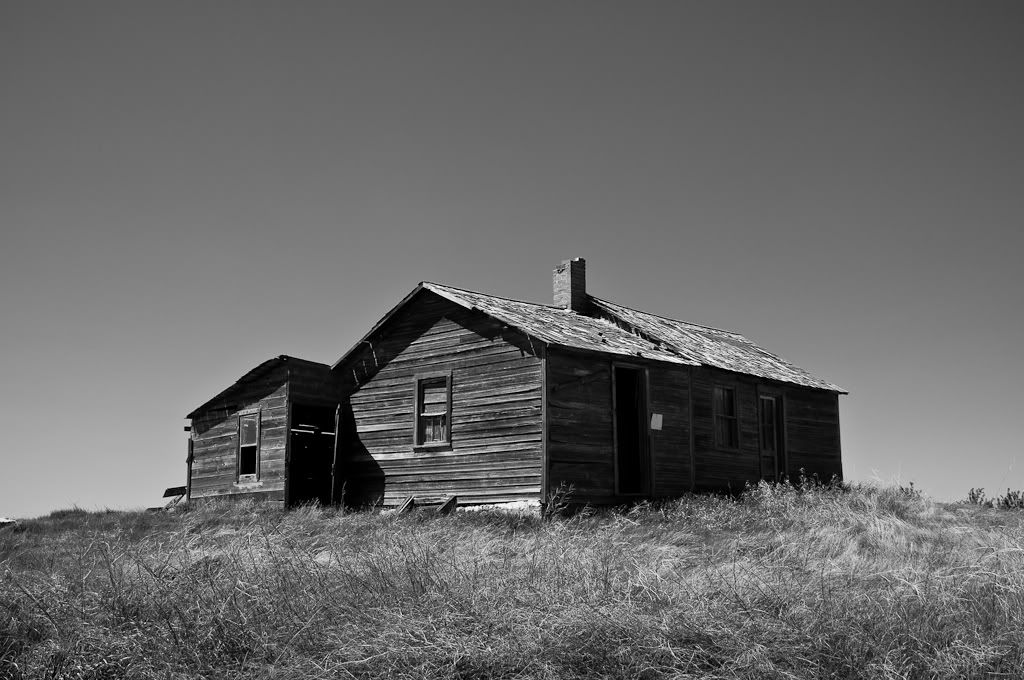
Let me know what you guys think. My intention is to capture tonal relationships. I happen to choose derelict houses because they give me something for the landscape to create tonal relationships with. The brightness of the harsh prairie sky can only be seen as harsh when one views it glaring on something for example. I find that old broken buildings also show the power of the landscape; man's creations are not winning the battle....








